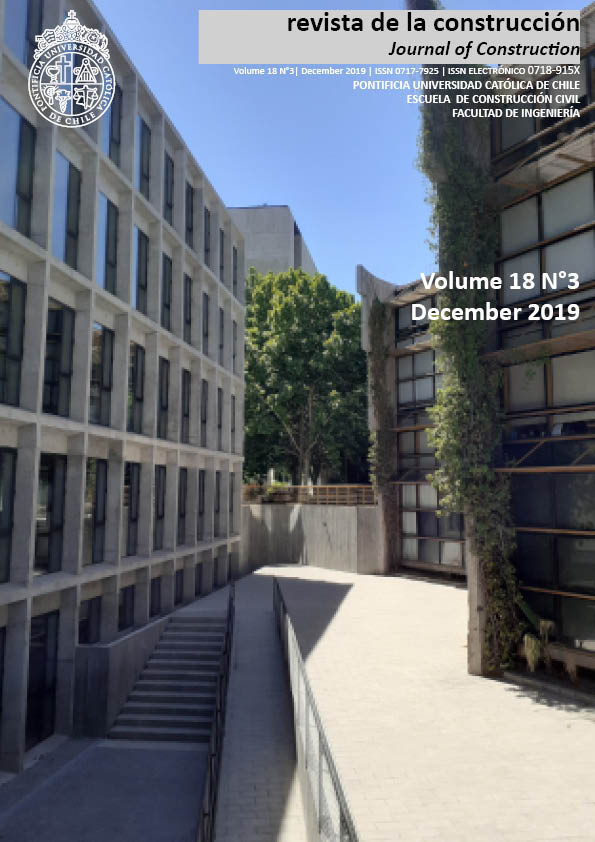Mechanical properties of self-compacting concrete with recycled bead wires
DOI:
https://doi.org/10.7764/RDLC.18.3.501Keywords:
recycling, waste steel fibers, Non-Destructive, electron scanning microscopy, self-compactingAbstract
This paper investigates the properties of self-compacting concrete with waste steel bead wires obtained as a result of the separation of waste tires. Waste steel bead wires were added to concrete between 1% and 5% by weight with an increment of 1%. In total, 54 cubes, 6 cylinders and 6 beams were cast, cured and tested in according to various standards to obtain the compressive, splitting tensile and flexural strengths, respectively. In addition, 6 cubes were left in salty water solution with a salt concentration of 4% for 120 days and tested in compression. A scanning electron microscopy (SEM) was also conducted on samples after failure. Test results showed that short time corrosion of steel fibers does not affect the mechanical properties. Also, the increase in the ratio of steel fiber was found to contribute positively to the mechanical properties of concrete up to 4%, beyond which, mechanical properties were reduced. Finally, in the samples subjected to bending tests, it has been found that a 6-fold increase in bending strength compared to the reference (non-fiber) sample was achieved in case of steel fiber ratio of 4% and 5%.
Downloads
Published
How to Cite
Issue
Section
License

This work is licensed under a Creative Commons Attribution-NonCommercial-NoDerivatives 4.0 International License.





